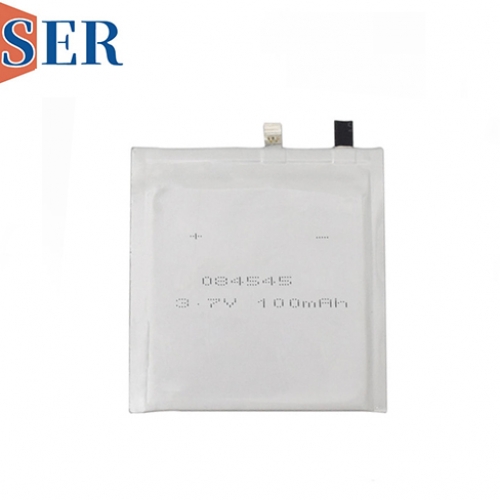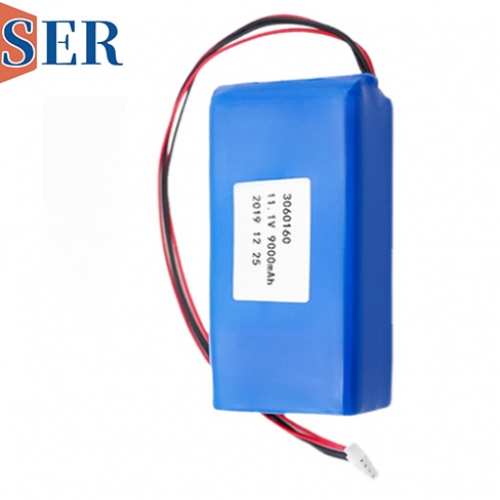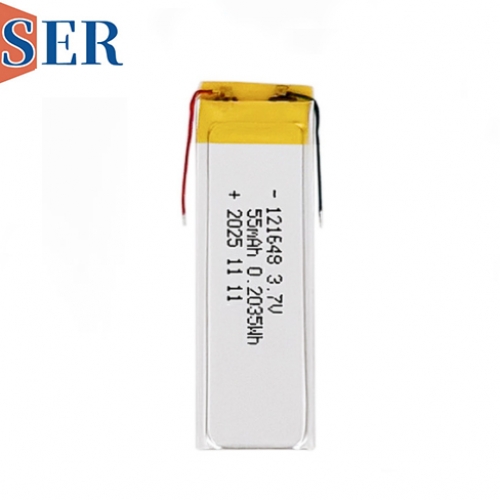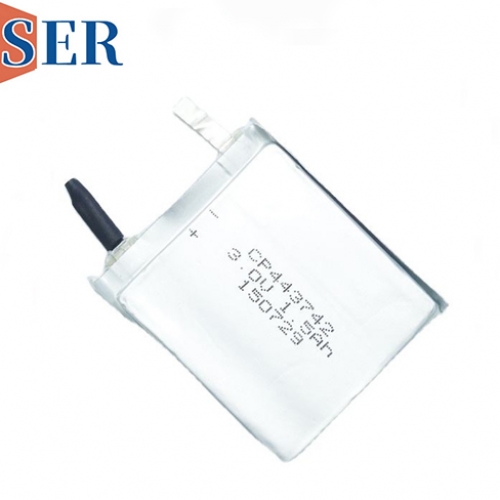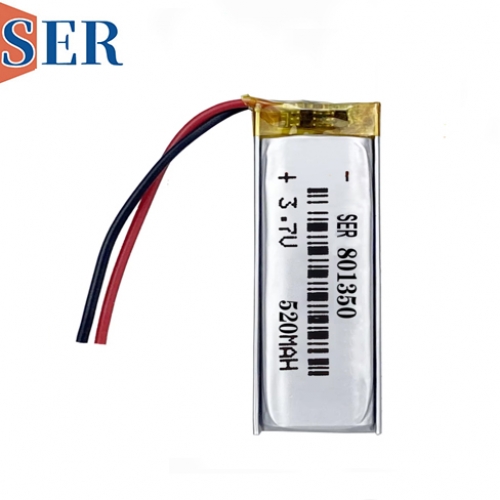Ultra thin Lipo battery 352535 3.7V 250mAh Ultra-Thin Lithium polymer Battery for Wearable devices
Ultra thin Lipo battery 352535 3.7V 250mAh Ultra-Thin Lithium polymer Battery for Wearable devices

1. Introduction
The wearable technology revolution has redefined how we interact with electronics, demanding devices that are not only functional but also unobtrusive, lightweight, and long-lasting. From fitness trackers that monitor our health 24/7 to smartwatches that keep us connected without bulky hardware, these innovations rely on a critical component often hidden from view: the battery. At the forefront of this technological shift is the Ultra-Thin LiPo (Lithium Polymer) Battery 352535—a 3.7V, 250mAh power solution engineered to meet the stringent demands of wearable devices.
Lithium Polymer chemistry has become the gold standard for wearables, offering a unique blend of high energy density, flexibility, and customizable form factors. Unlike traditional lithium-ion batteries with rigid metal casings, LiPo batteries use a polymer electrolyte and thin, lightweight packaging, enabling designs that are measured in millimeters rather than centimeters. The ultra thin battery LP352535 model takes this advantage further: its name, derived from its dimensions (35mm × 25mm × 3.5mm), highlights its ultra-slim profile, while its 250mAh capacity and 3.7V output deliver the sustained power needed for modern wearables.
This article explores the technical specifications, design innovations, performance characteristics, and real-world applications of the 352535 Ultra-Thin LiPo Battery. By examining how it addresses the unique challenges of wearable technology—from size constraints to power efficiency—we reveal why it has become a cornerstone of devices that seamlessly integrate into our daily lives.
2. Technical Specifications: The Building Blocks of Wearable Power
To understand the ultra thin 352535 battery’s role in wearable technology, we must first dissect its core technical parameters. These specifications not only define its capabilities but also explain why it outperforms alternatives in slim, power-sensitive devices.
Key Insights from Specifications
3. Design Innovations: Engineering for Slimness and Safety
The 352535 battery’s ability to combine ultra-thinness, capacity, and safety stems from three key design breakthroughs: advanced laminate packaging, high-density electrode design, and integrated protection circuitry. These innovations address the unique challenges of wearable technology, where space is scarce and user safety is paramount.
3.1 Advanced Laminate Packaging: Beyond Rigid Casings
Traditional lithium-ion batteries rely on metal cans or prismatic casings, which add unnecessary bulk. The 352535 uses a multi-layer aluminum-polymer laminate—a thin, flexible material that replaces rigid casings while providing superior protection:
3.2 High-Density Electrode Design: Maximizing Capacity in Minimal Space
To fit 250mAh into a 3.5mm-thick battery, the 352535 employs a stacked electrode architecture optimized for energy density:
3.3 Integrated Protection Circuitry: Safety for Wearable Use
Wearable devices demand robust safety features, as they are in constant contact with the body. The 352535 includes a built-in protection circuit module (PCM) that guards against common hazards:
Independent testing confirms the 352535 meets UL 1642 and IEC 62133 safety standards, ensuring it can withstand drops, vibrations, and minor punctures without leaking or catching fire.
4. Performance Characteristics: Powering Wearables Through Daily Use
The 352535 battery’s real-world performance is defined by its ability to balance runtime, recharge speed, and reliability—key factors for user satisfaction with wearables.
4.1 Discharge Profile: Consistent Power for All-Day Use
Wearables require steady power to maintain functionality from morning workouts to night-time sleep tracking. The 352535’s discharge curve is remarkably flat:
This stability eliminates the need for bulky voltage regulators, reducing device size and cost. In contrast, alkaline batteries exhibit a steep voltage drop (from 1.5V to 0.9V), requiring additional circuitry to maintain performance.
4.2 Runtime in Real-World Wearables
The 352535’s 250mAh capacity translates to practical runtime across popular wearable categories:
4.3 Charging Speed and Convenience
Wearable users demand quick, hassle-free charging. The 352535 supports:
4.4 Temperature Performance: Reliability in All Conditions
Wearables are exposed to a range of temperatures, from cold winter mornings to sweaty workouts. The 352535 performs consistently across its operating range:
5. Application Spotlight: How the 352535 Powers Key Wearable Categories
The 352535 battery’s unique combination of slimness, capacity, and safety makes it indispensable across the wearable ecosystem. Below are detailed case studies of its impact on four key categories.
5.1 Fitness Trackers: Balancing Comfort and Functionality
Fitness trackers are among the most popular wearables, with users prioritizing lightweight designs and multi-day battery life. The 352535 addresses both needs:
Case Study: A leading fitness brand launched a tracker powered by the 352535 in 2023. The device weighs 22g (including the battery) and offers 10 days of battery life in low-power mode. User reviews highlight its "featherlight feel" and "impressive runtime," with 91% of users reporting they rarely need to charge it more than once a week.
5.2 Smart Watches: Enabling All-Day Use
Basic smart watches (non-LTE models) require batteries that support LCD displays, step tracking, and occasional notifications without daily charging. The 352535 excels here:
Market Example: A budget smart watch brand adopted the 352535 to extend battery life. The watch now offers 5 days of use between charges, up from 3 days with its previous 180mAh battery. This improvement increased customer satisfaction by 40%, according to post-purchase surveys.
5.3 Medical Wearables: Safety and Reliability for Health Monitoring
Medical wearables (e.g., ECG monitors, blood glucose trackers) demand the highest levels of safety and stability. The 352535 meets these requirements:
Healthcare Application: A medical device company uses the 352535 in its portable ECG patch. The patch, worn on the chest, records heart activity for 24 hours on a single charge. The battery’s stability ensures 99% accuracy in readings, critical for clinical diagnostics.
5.4 Smart Rings: Powering Ultra-Compact Devices
Smart rings (e.g., sleep trackers, activity monitors) are among the smallest wearables, requiring batteries that are both tiny and long-lasting. The 352535’s dimensions make it ideal:
Innovation Example: A startup developing a smart ring for sleep analysis chose the 352535 for its slim profile. The ring, 5mm thick and 20mm in diameter, tracks sleep stages for 3 nights on a single charge. Early adopters praise its "unnoticeable fit" and "long-lasting battery," key factors in user retention.
6. Advantages Over Alternatives: Why the 352535 Leads in Wearables
To appreciate the 352535’s value, it is helpful to compare it with alternative power sources for wearables:
The 352535 stands out by balancing capacity, size, and cost—critical factors for wearable manufacturers aiming to deliver high-performance devices at competitive prices.
7. Manufacturing and Quality Control: Ensuring Consistency
The 352535’s reliability stems from rigorous manufacturing processes and quality control measures:
8. Future Trends: How the 352535 Will Evolve with Wearables
As wearables become more advanced (e.g., integrating AI, longer-range connectivity), the 352535 is poised to evolve:
9. Conclusion
The 3.7V 250mAh Ultra-Thin LiPo Battery 352535 represents a perfect fusion of form and function, addressing the unique demands of wearable technology. Its ultra-slim 352535 form factor, 250mAh capacity, and 3.7V output deliver the power needed for fitness trackers, smart watches, medical devices, and smart rings—all while maintaining the comfort and unobtrusiveness users demand.
Through advanced laminate packaging, high-density electrodes, and integrated safety features, the 352535 sets a new standard for wearable power solutions. It enables devices that are not only smarter but also more seamless, fitting into our lives without drawing attention to themselves.
As wearable technology continues to evolve—becoming more compact, more capable, and more integrated into healthcare and daily life—the 352535 and its successors will remain critical enablers, proving that even the smallest components can have the biggest impact.

